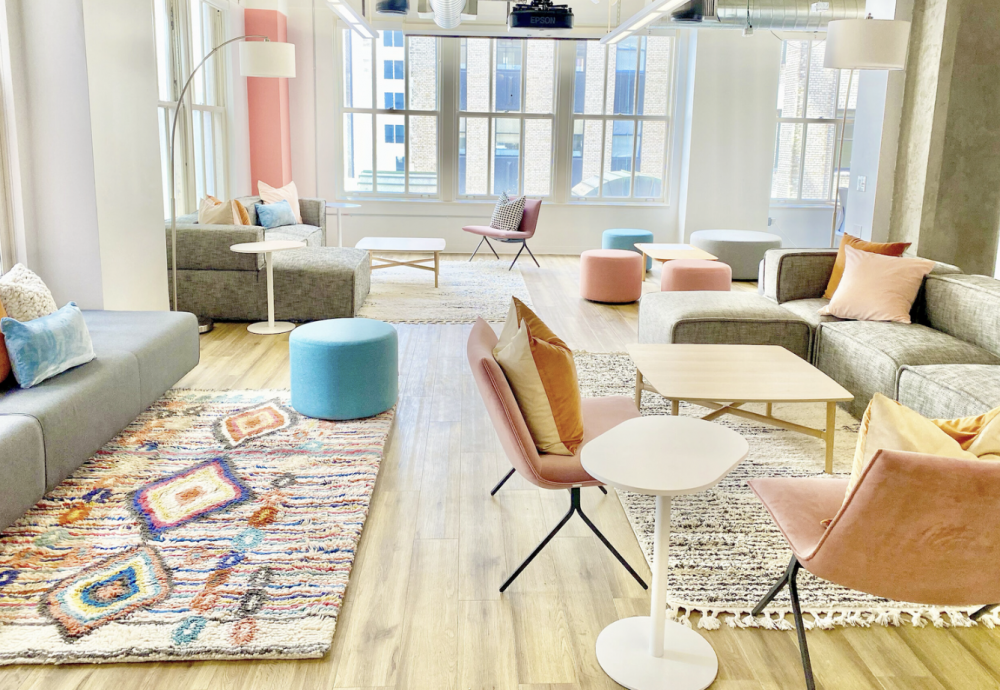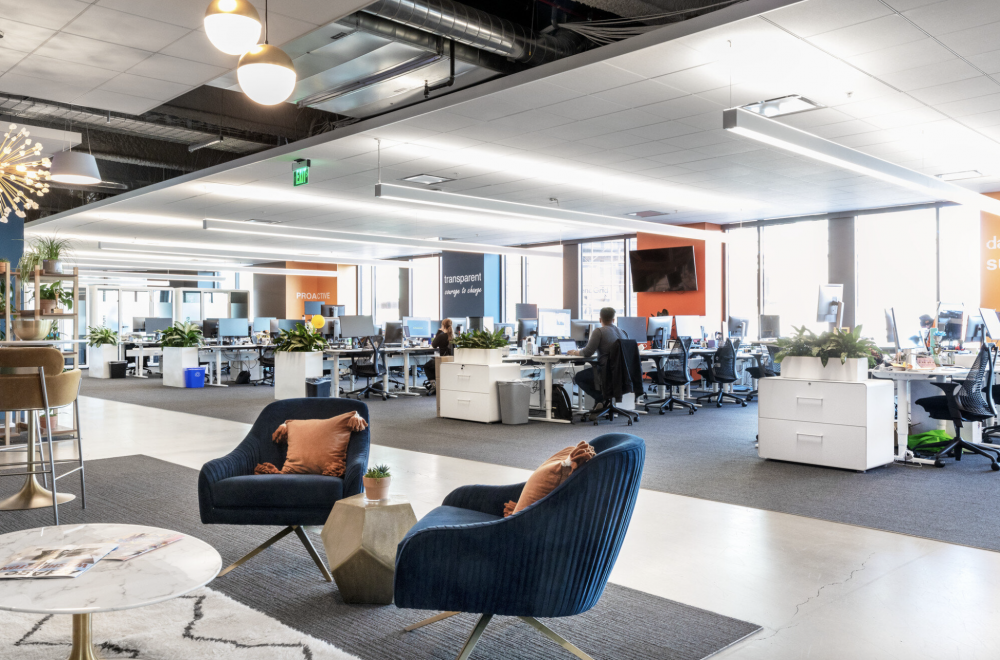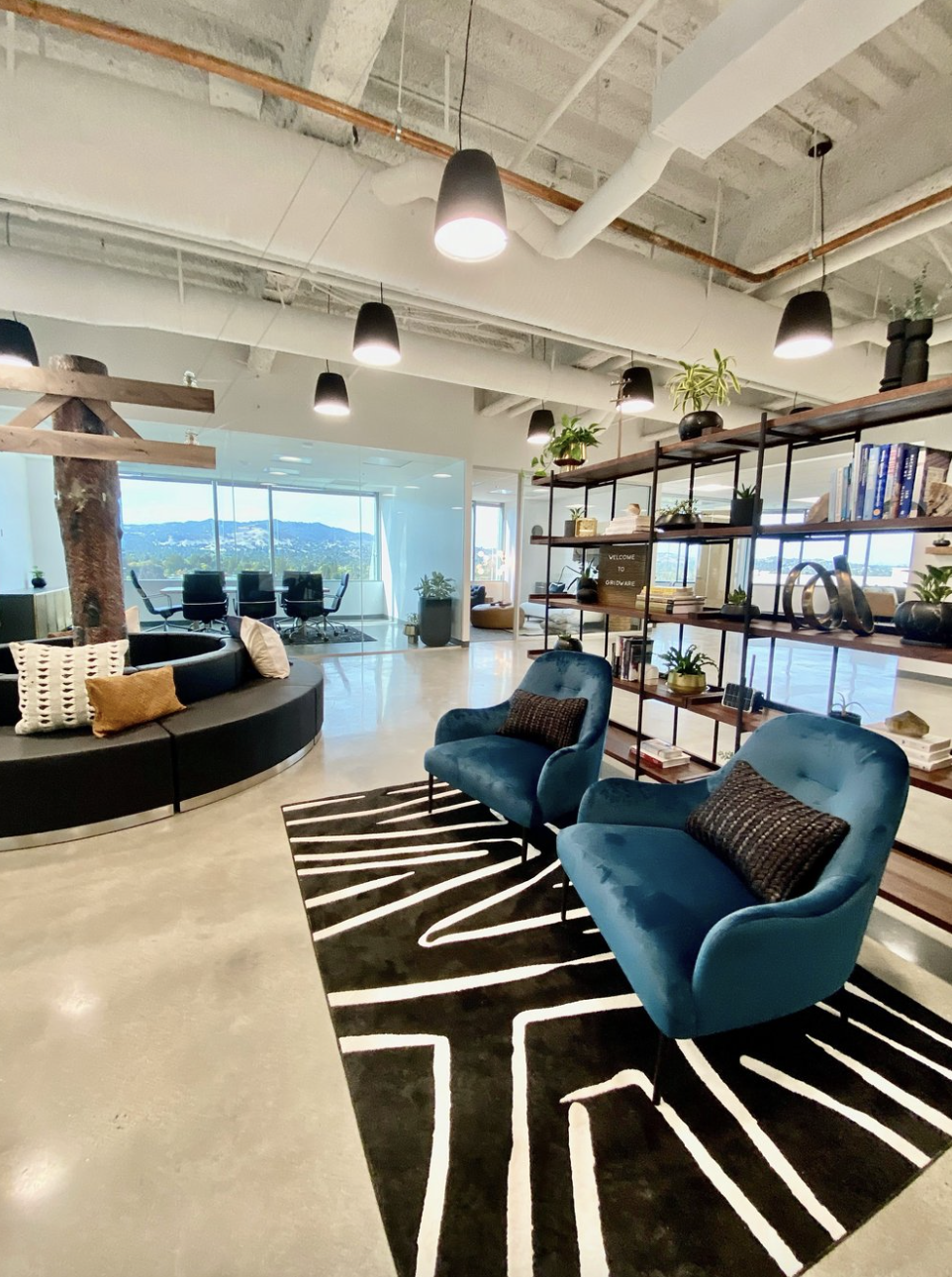Ashley Haase of Ashley David Design explores how designers have adapted to think, create, and design differently in the fluid new world of work.

When the world first shut down three years ago at the start of the pandemic, most people thought they’d be returning to their jobs within a few weeks. We know now that while many brick-and-mortar businesses slowly re-opened while adapting to new policies, others floundered and closed altogether. In the midst of this wave of change in business, commercial interior designers were forced to shift and adapt their skills while also adjusting to a new remote work world with fewer walls. These fresh ideas and new strategies have ushered in a revolution in commercial interior design with limitless opportunities.
Today, almost 75 percent of US companies are using or plan to implement a permanent hybrid work model; 63 percent of high-growth companies use a “productivity anywhere” work model, while employees agree! Fifty-five percent of employees say they want to work remotely at least three times a week.

Keeping employees remote was necessary for health and safety in the early stages of the pandemic. As companies settled into that new rhythm, many realized an opportunity to reduce overhead by purging huge physical offices they were no longer using and even hiring employees in other remote locations. Many companies changed from a collaborative, working environment to more private and spread-apart spaces. This was a huge U-turn. A few years prior to the pandemic, there was a major shift in design to open, free-flowing and collaborative work environments, some with huge-group tables and open desk spaces. With the onset of the virus, however, suddenly people needed to retreat to individual offices, cubicles, and desk dividers.
Yet, what seemed as a limitation at first brought about a renaissance in commercial interior design with many designers, including myself, pivoting in the early stages to learning everything we could about Covid-protection measures. An opportunity arose to become an expert in keeping workplaces safe and doing it quickly. We embraced these design challenges and continuous fluxes in safety protocols for employees.

As the pandemic further evolved, we formed relationships with new vendors that had amazing solutions to separate employees in thoughtful ways: everything from pop-up conference rooms to private phone or call spaces to small ad-hoc areas that allow people to work comfortably while apart. And with necessity being the mother of invention came the new trend in virtual interior design services and our new sister shop serving not only a remote need, but allowing for clients to have all the benefits of working with a designer without the in-person expense. This also is a great secondary solution for companies that are spread out and/or have budget constraints.
Though the pandemic has brought hurdles like supply chain issues and shipping delays, the core approach to interior design has not changed. If anything, the pandemic has brought the interior design industry closer. The relationships many designers have built with vendors and suppliers and contractors were only strengthened by the bond of “we’re all in this together.” We continued – and continue – to work together to find creative solutions to clients’ design challenges in their ever-changing workplaces.
Design leaders have stayed positive for their clients by reminding them that new hybrid workplaces also bring benefits like increased space-planning and team flow. And, an opportunity to ask questions that may never have been asked before, such as, What teams do you have as a company from finance to sales to engineering and who needs to be home or in the office and how often and which days and how many people are on those teams and how do they work together and all of the things? Phew! But it makes a difference.

The most strategic designers today truly have a new opportunity to become partners with their clients by figuring out a company’s function to an even more degree as opposed to just creating beauty.
Going forward, every industry and sector of business will have different needs. As many have thrived seamlessly into hybrid and remote, others will need to physically be together in an office to best do their jobs. There will always be a core human need and desire for companionship and collaboration with peers.
Just like any hurdle in life, you adapt and stay flexible. There’s always a solution. The design rebirth is here and well. Some companies have downsized, other companies have more than doubled. But working environments will stay. Some will be in-person and some will be remote, but physical spaces will always exist. Great design is needed everywhere. And the best designers won’t be afraid to adapt, to think, to create, and to design in the fluid new world of work.


I’ve been a fan of ADD’s work for awhile now. Great article, Ashley! Keep on innovating!